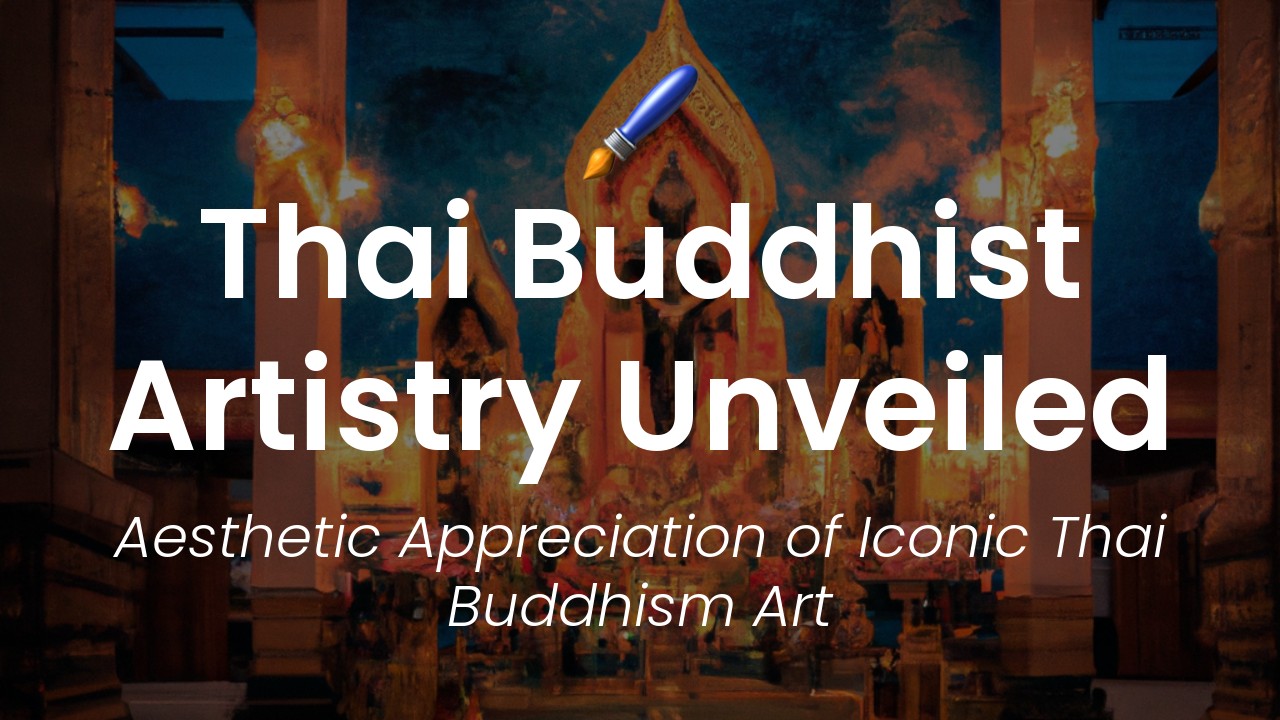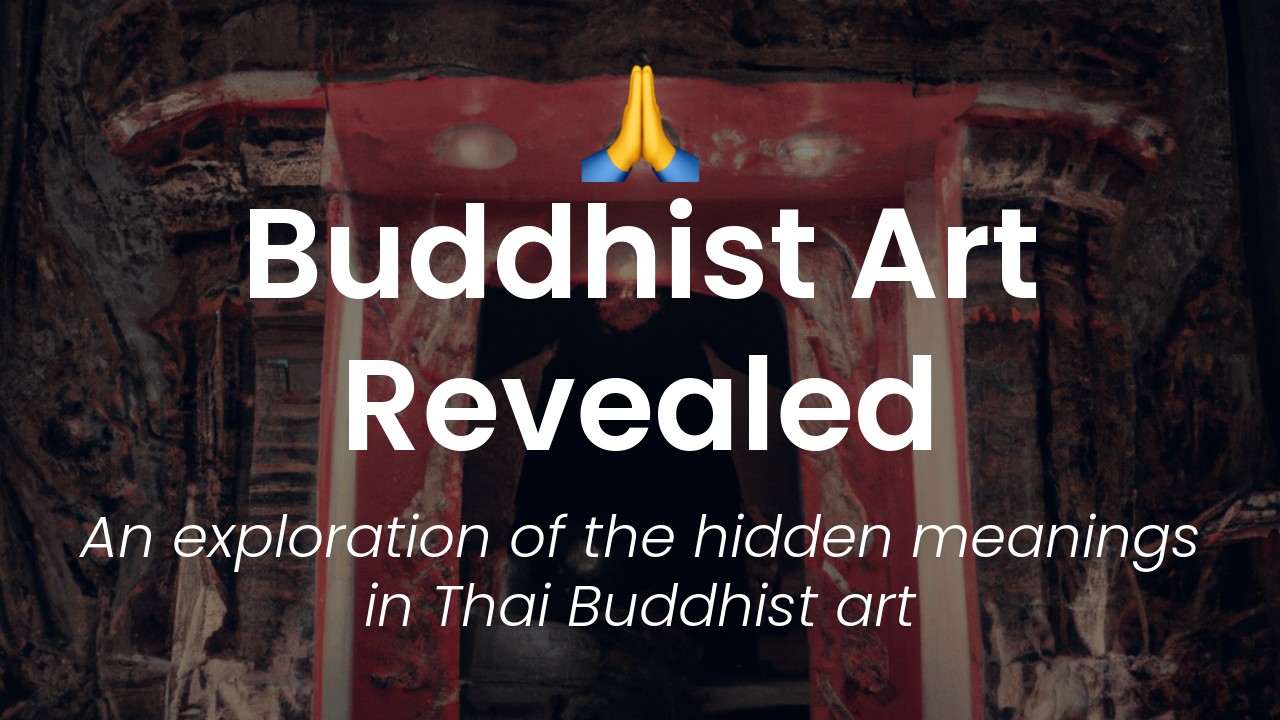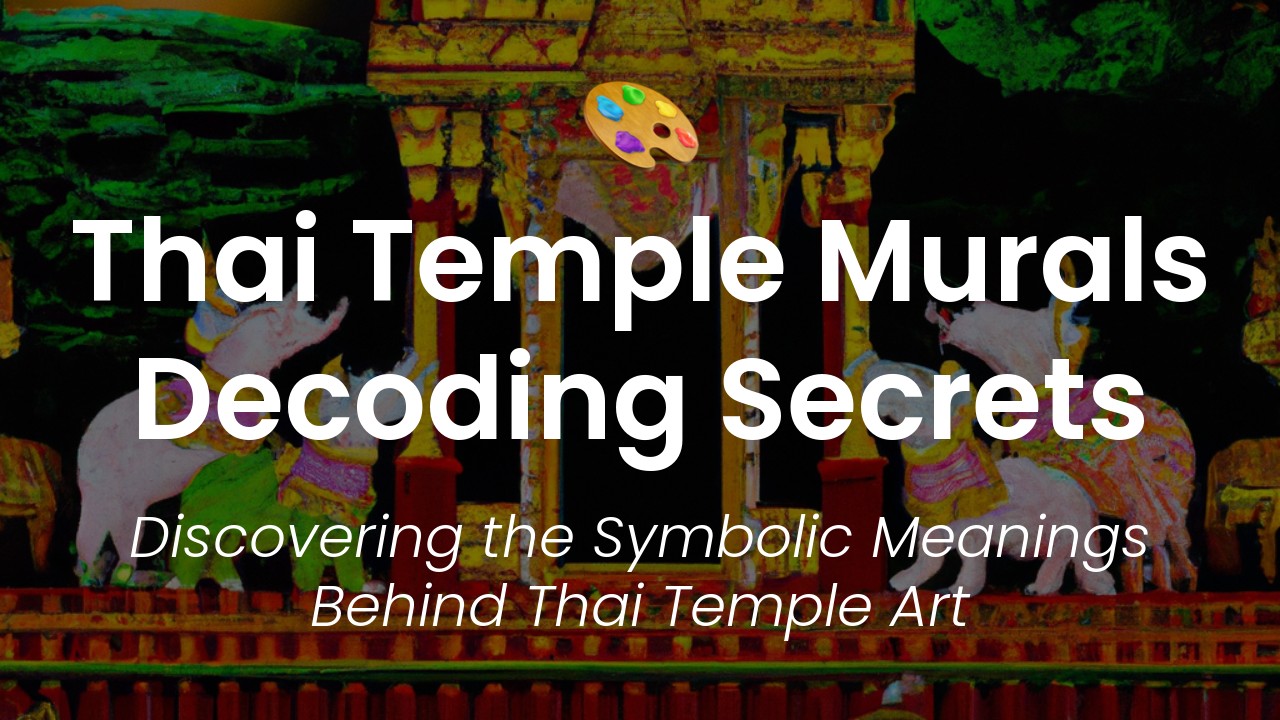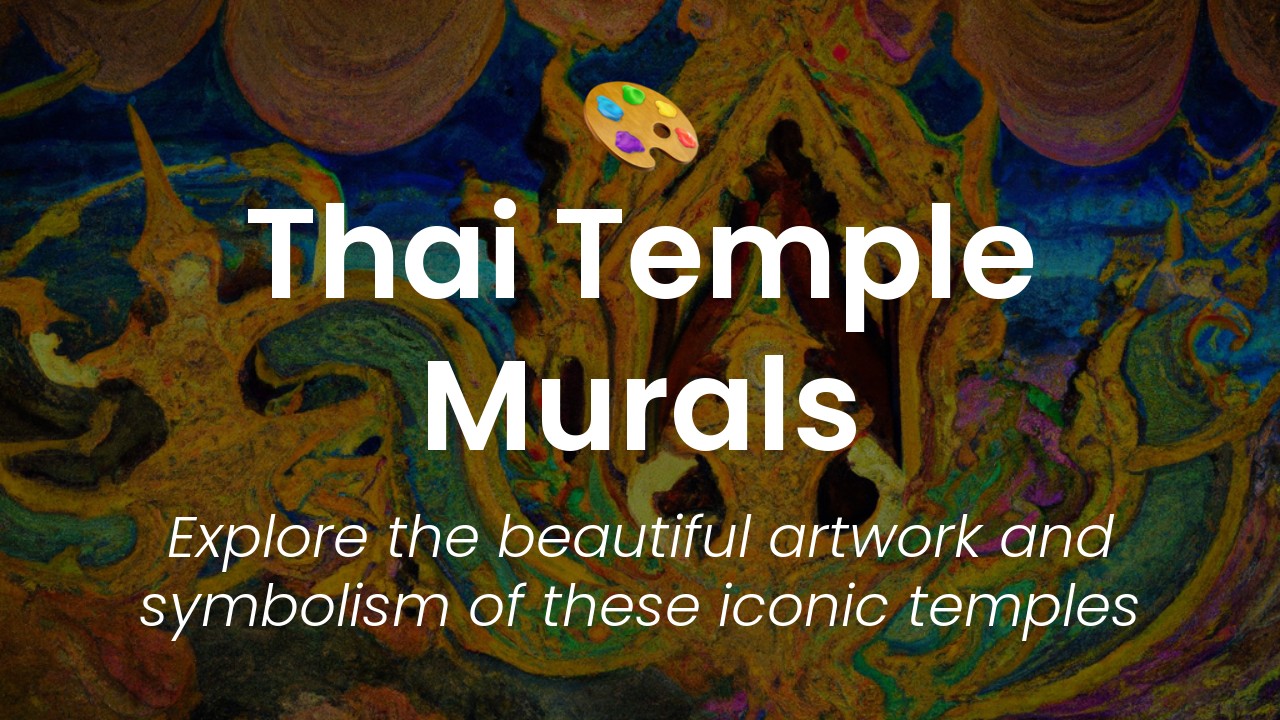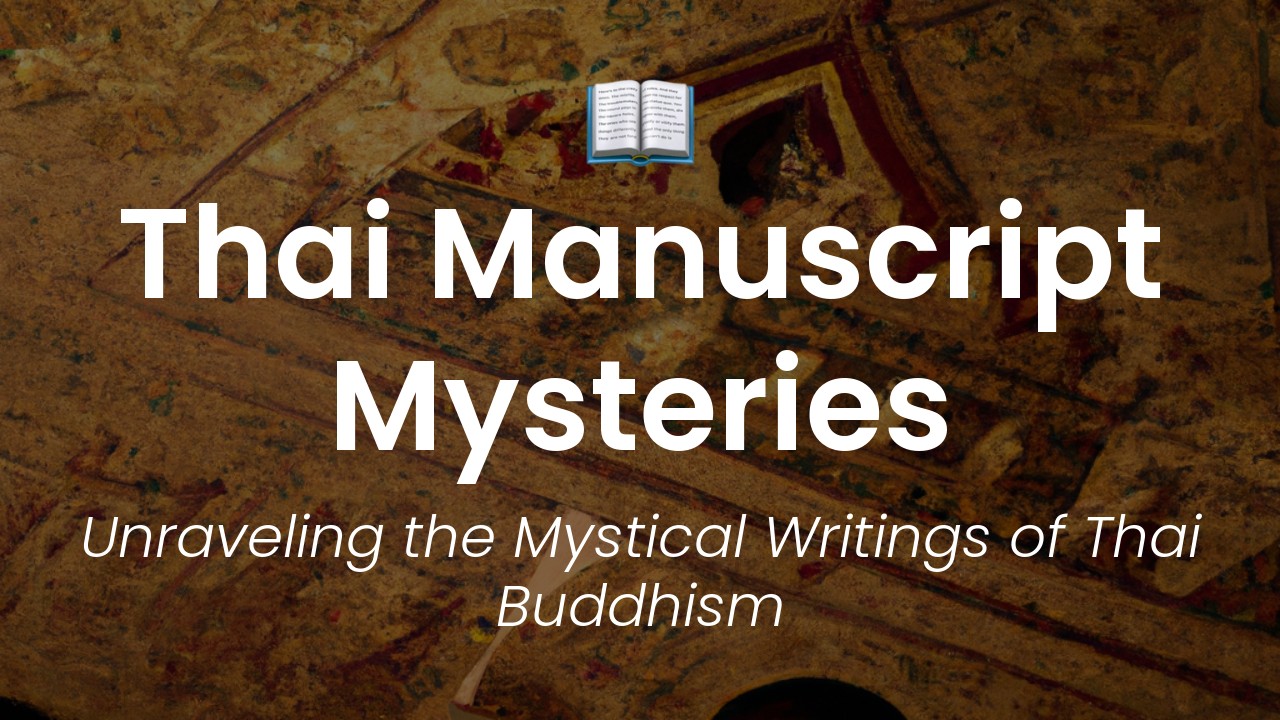As a Thai woman, I have always been fascinated with the rich history and culture of my country. One aspect of Thai culture that I find particularly captivating is the traditional art of Buddhist paintings. These artworks offer a glimpse into the spiritual world of Buddhism and the daily life of Thai people from centuries ago. It is a treasure trove of stories and traditions, showcasing the harmony between art and religion.
Thai Buddhist paintings are a reflection of this harmony and its importance to Thai culture. These paintings are intricate and vividly colored depictions of stories from the life of Buddha, Jataka tales, and Thai folklore. They are painted on various surfaces like cloth, wood, and paper. One of the most famous examples of Thai Buddhist paintings is the murals in the temples. The murals tell the stories of Buddha's life and teachings, as well as famous Thai myths and legends such as The Ramakien (Thai version of the Indian epic Ramayana).
In this blog post, I want to share with you the beauty and history behind Thai Buddhist paintings. We will take a closer look at these artworks, their meaning, the techniques used, and where to see them in Thailand. Whether you are an art lover, a Buddhist, or someone who wants to learn more about Thai culture, this article will offer you a glimpse into the world of Thai art and spirituality. So, let's dive in and discover the world of Thai Buddhist paintings together.
Main Themes Represented in Traditional Thai Buddhist Paintings
Traditional Thai Buddhist paintings are a reflection of the country's rich culture and religious beliefs. These artworks have been created by skilled painters for centuries and have become an important part of Thailand's heritage.
One of the most common themes represented in Thai Buddhist paintings is the Jataka tales. These tales describe the previous lives of the Buddha before he attained enlightenment. They are a popular subject in Thai art and provide an opportunity to explore different aspects of the Buddha's wisdom and teachings.
Another popular theme in Thai Buddhist paintings is scenes depicting the life of the Buddha. These portrayals can show the Buddha's birth, his renunciation of worldly life, his enlightenment, and his teachings to his disciples. Many Thai painters have their unique styles and techniques when depicting these scenes.
Other popular themes include Wheel of Life and representation of heaven and hell. The Wheel of Life, also known as Bhavacakra, is a diagram that symbolizes the cycle of birth, death, and rebirth. It is an important teaching in Buddhism and is often used to illustrate the concept of Karma in Thai art.
The representation of heaven and hell is also a common subject in Thai Buddhist paintings. These art pieces show people being rewarded or punished for their actions in life based on their Karma. In a country where spirituality is an integral part of the people's daily lives, Buddhist paintings help reinforce the importance of good deeds and the consequences of bad ones.
Materials and Techniques Commonly Used to Create These Paintings
Thai Buddhist paintings have been created using various materials and techniques throughout history. Ancient Thai painters used natural pigments made from minerals, plants, and other organic materials. These were mixed with boiled fish glue and water and applied to surfaces such as wood, cotton, and paper.
Today, however, modern Thai Buddhist painters use acrylic paints, canvases, and sometimes even digital tools to create their works of art. Although the materials and techniques have changed, the skills and techniques have been passed down through generations.
One common technique is the use of gold leaf. This technique involves the application of thin sheets of gold on the paintings, creating an intricate and beautiful texture that shimmers and sparkles when viewed under sunlight.
Another technique is the use of intense colors. Many Thai Buddhist paintings are known for their vivid colors, like red, orange, and yellow. These bright colors are believed to represent the vitality and energy of life, which is an important theme in Buddhist teachings.
Symbolism and Meaning Conveyed Through the Images Portrayed
Thai Buddhist paintings are rich in symbolism and deep meanings that reflect the central teachings of Buddhism. Each image represents a particular aspect of the Buddha's teachings, which are meant to inspire and guide the observer towards enlightenment.
For example, in the Jataka tales, the Buddha often portrays different animals, each with its meaningful symbolism. The deer is a symbol of peace and gentleness, while the monkey represents intelligence and resourcefulness. These animal characters are embedded with messages that remind the viewer of the Buddha's teachings and principles.
The use of colors also conveys specific meanings. Red represents passion and lust, while white symbolizes purity and peace. Blue is associated with wisdom and compassion, while Yellow stands for energy and vitality.
Use of Thai Buddhist Paintings Within Buddhist Temples and Practices
Thai Buddhist paintings play a significant role in the religious practices and rituals of the people. They can be found in temples, homes, and public spaces throughout the country. Buddhists often use these paintings as a way to help them focus their minds during meditation.
Many Buddhist temples in Thailand have rooms or halls dedicated to these artworks. Visitors can view these paintings and learn more about their symbolism and meanings. Monks often use the paintings to teach the principles of Buddhism to novices and laypeople.
Influence of Traditional Thai Paintings on Modern Art
Traditional Thai Buddhist paintings have had a significant impact on modern art in Thailand. Many contemporary artists continue to incorporate elements of these artworks into their creations, providing their unique viewpoints and interpretations.
The use of bright colors, intricate patterns, and symbolism is a prevalent feature in modern Thai art. Many artists use these elements to explore social and cultural issues, bringing a new perspective to age-old traditions.
Locations Where Thai Buddhist Paintings Can Still Be Found and Appreciated Today
Thai Buddhist paintings can be found in various parts of the world, but there is nothing like experiencing them firsthand in Thailand. One of the best places to view these paintings is at the temples, particularly Wat Phra Kaew and Wat Bowonniwet in Bangkok. These places are well-known for their highly intricate Buddhist paintings, gold leaf ceilings, and ornate sculptures.
In Chiang Mai, you can visit the Chiang Mai City Arts and Cultural Centre, which showcases some of the most beautiful Thai Buddhist paintings in the region. In the north of Thailand, it is also possible to find folk art in the form of murals in rural temples that often depict everyday life in rural Thailand and local legends.
In conclusion, Thai Buddhist paintings offer a look into the rich history, culture, and spiritual beliefs of the country. These works of art provide us with an opportunity to explore the deep meanings and symbolism embedded in the teachings of Buddhism. As more people discover the beauty of traditional Thai Buddhist paintings, they help preserve and celebrate this vibrant aspect of Thailand's cultural heritage.

